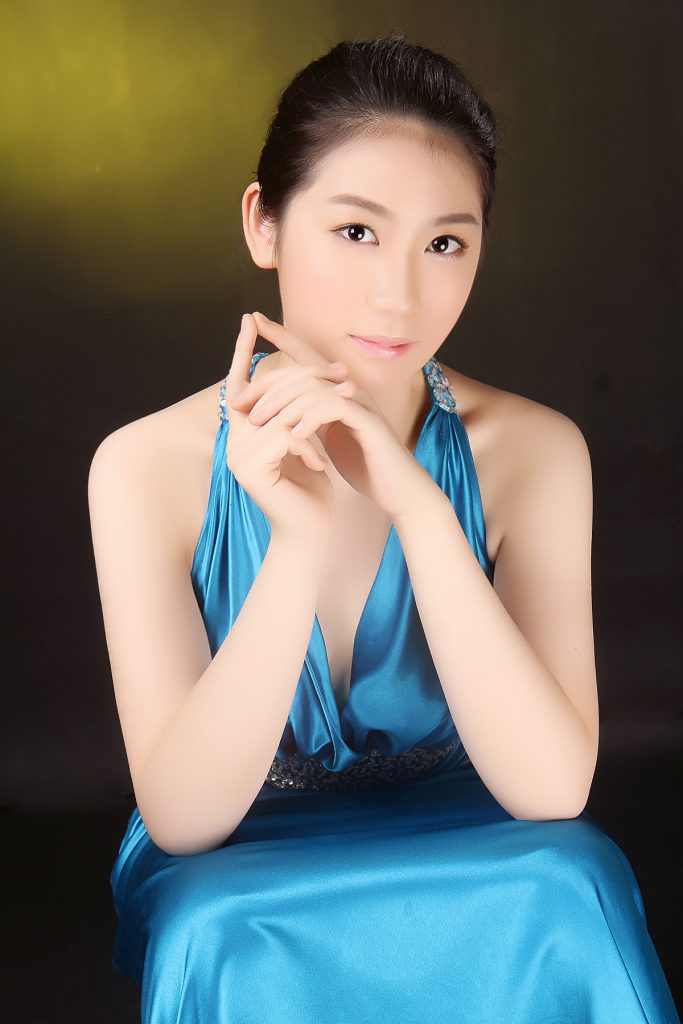Wei Luo Makes Impressive Debut with San Diego Symphony in Prokofiev Third Piano Concerto
Conductor Laureate Jahja Ling made another felicitous visit to the San Diego Symphony podium Friday, December 6, bringing a robust program of Dvořák and Prokofiev to Copley Symphony Hall. Young Chinese pianist Wei Luo made her impressive San Diego debut giving a riveting, muscular account of Serge Prokofiev’s Third Piano Concerto in C Major.

Wei Luo [photo (c.) Xie Guichen]
She was fortunate to have Ling leading the orchestra—he can always be counted on to give give the guest soloist unfailing sensitive support at every turn, sleekly matching her interpretive shadings and keeping the orchestra in sync with her frequent breathtaking tempos. I was taken with their account of the middle movement, the Andantino: Ling and the orchestra stressed the composer’s whimsical air to the march-like main theme, while Wei Luo suggested balletic movement, teased by her delicious rubato.
Ling appeared happy to indulge the orchestra’s most luxurious sonority in the finale, basking in those grand, arching themes that seemed to slyly look back to Rachmaninoff’s late Romantic style. Wei Luo took majestic command of the pummeling repeated chords that bring this concerto to such a glorious, satisfying conclusion, to which Friday’s unusually small audience gave its raucous approval. Her glowing encore was Chopin’s Nocturne in C-sharp Minor.
As winning as the orchestra sounded in its collaborative role in the Prokofiev concerto, I though the players moved up a notch performing Antonín Dvořák’s Symphony No. 8 in G Major. Ling’s affinity to full-bloom Romantic melodic rhetoric is no secret, and the music of Dvořák is friendly territory, to say the least. The orchestra responded with a full, expansive string sonority given even more force with the glowing resonance of the cello section, for this concert placed stage center in front of the woodwinds so their sound communicated directly with the audience. Ling kept the pulse of the symphony’s third movement, an insistent triple meter Allegretto grazioso, aptly unrelenting, and his wide dynamic palette kept the movement fresh. The glorious trumpets heralded the final movement that unfolded with the majesty that makes this Dvořák symphony so beloved.
Ling opened his program with a charming Suite from Nikolai Rimsky-Korsakov’s opera The Snow Maiden. If we can believe the printed program, the orchestra has never performed this suite before, a shame, because its four movements are cleverly inventive, and Rimsky-Korsakov’s vivid orchestration makes the Suite a welcome program addition. Although the Suite’s last movement, “Dance of the Tumblers” is a familiar number, especially on pops concerts, the complete Suite deserves to be programed as regularly as those bubbly Rossini overtures that so frequently appear.
Like another recent San Diego Symphony concert this season, however, this opening work’s sketchy ensemble playing suggested lack of adequate rehearsal attention.
This concert was presented by the San Diego Symphony on December 6, 2019, in the Jacobs Music Center’s Copley Symphony Hall in downtown San Diego. It was repeated on December 7 and will be given again at 2:00 p.m. on December 8, 2019 in the same venue.
